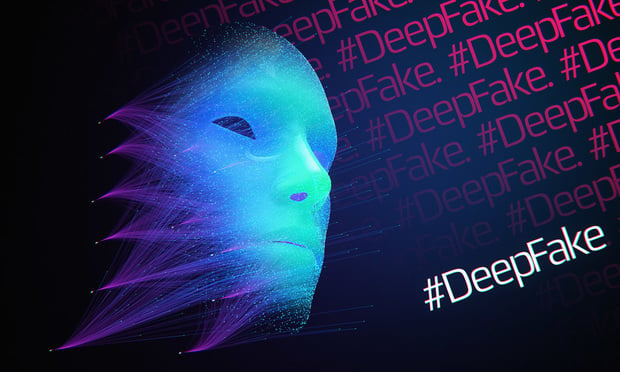Features

Supreme Court Set to Address Procedural Inconsistencies and Claims of Unconstitutional Vagueness Attributed to CAFC
The U.S. Supreme Court is set to commence its term on October 6. Among the cases it will review are several appeals concerning copyright and trademark law. One notable case seeks to address procedural inconsistencies and claims of unconstitutional vagueness attributed to the U.S. Court of Appeals for the Federal Circuit.
Features

WTF? Round Two: The Federal Circuit Grants Brunetti (and Trademark Owners) a Reprieve
In August, the Federal Circuit issued a surprisingly self-critical ruling in the long-standing dispute between Erik Brunetti and the USPTO over Brunetti’s efforts to register the term F*CK for a wide variety of goods and services. The Federal Circuit concluded that the Board’s decision in In re Brunett lacked sufficient clarity and therefore vacated it for further proceedings, which although facially unremarkable, may not only prove to be a boon to Brunetti, it may also be highly beneficial to many trademark owners who have been forced to wrestle with failure-to-function refusals.
Features

AI Against Counterfeits: How Smart Technology Is Reshaping Brand Protection and Platform Accountability
As AI becomes more sophisticated at detecting fakes, it is not just changing how brands protect themselves — it has the potential to change the legal framework for determining when platforms themselves might be held responsible for the counterfeits sold on their sites.
Features

Post-SCOTUS District Court Ruling In Jack Daniel’s v. VIP Products Reshapes Trademark Dilution Jurisprudence
For companies developing novelty products, advertising campaigns, or brand-related parodies, this case underscores the importance of reviewing both confusion and reputational risks. For rights holders, it affirms that parody is not a license to defame a brand.
Features

OpenAI Gets Summary Judgment In Trademark Battle With Open Artificial Intelligence
A trademark battle that pitted technology giant OpenAI against a company known as Open AI (note the space between the terms) has resulted in a summary judgment that has ordered the smaller enterprise to cease use of the name and its prized internet real estate, open.ai.
Features

Successful and Enforceable Brands Connect with the Consumer: Lessons from a Recent 10th Circuit Decision
Protectable rights are created the same way a successful brand is established — linking your Mark and your company’s offering in the minds of the consumer is a must. The good news? Regardless of your company’s size or marketing budget, this necessary connection can be achieved.
Columns & Departments

IP News
“Not Merely Monkey Business”: The Bored Ape Case and NFT Branding in the Ninth Circuit
Features

The Suspension Bridge Effect: Why Trademark Attorneys Must Protect Entire Brand Systems, Not Just Individual Marks
In brand protection, as in bridge engineering, the strength of brand differentiation (trademark distinctiveness) depends on the integrity of each supporting cable. When one snaps, the question is not only whether you can fix that component, but also whether the whole structure will hold together long enough for the repair crew to arrive.
Features

Tea Leaves Tell Tales: Jury Awards $2.36 Million for Bigelow’s “Manufactured in the USA 100%” Label
On April 8, a California jury found that R.C. Bigelow, Inc., the well-known manufacturer of Bigelow teas, intentionally or recklessly misled consumers by claiming that some of its teabags were “Manufactured in the USA.” The price for this mislabeling was steep, with the jury awarding the class action plaintiffs $2.36 million.
Features

Beyond the Logo: How AI Complicates Trademark Protection In the Digital Age
Today, building brands solely on the promise of a different product or service has become unsustainable. Any “new and improved” feature or benefit is quickly eclipsed by competitors. Consequently, brands signal category superiority not through rational claims, but by reinforcing a distinct persona — a “ness” comprised of distinguishing traits and behaviors that form an ownable brand essence difficult for competitors to replicate.
Need Help?
- Prefer an IP authenticated environment? Request a transition or call 800-756-8993.
- Need other assistance? email Customer Service or call 1-877-256-2472.
MOST POPULAR STORIES
- Disconnect Between In-House and Outside Counsel'Disconnect Between In-House and Outside Counsel is a continuation of the discussion of client expectations and the disconnect that often occurs. And although the outside attorneys should be pursuing how inside-counsel actually think, inside counsel should make an effort to impart this information without waiting to be asked.Read More ›
- Divorce Lawyers' Obligation to ChildrenDo divorce lawyers have an obligation to disclose client confidences when it is in the best interests of the client's child to do so? The short answer of the rules of professional responsibility is 'no' because a 'yes' answer is deemed to be fundamentally inconsistent with the premises of the adversary system in which the divorce lawyer functions. The longer answer is that the rules encourage ' but do not require ' a divorce lawyer to counsel the client to authorize the disclosure because it is in the best interests of both parent and child.Read More ›
- Upping the Legal Training AnteWomble Carlyle's technology training and online learning programs were in need of an upgrade. Unprecedented firm growth, heightened emphasis on developing lawyers' core technology competencies, and a need to streamline and automate existing e-learning processes led the firm to initiate a fundamental shift.Read More ›
- Ticket Refund Suits Against StubHub to Get MDL TreatmentOnline ticket reseller StubHub faces lawsuits over allegedly unrefunded event tickets in California, after a federal judicial panel ordered that similar cases from jurisdictions in multiple states be coordinated.Read More ›
- Credible Fraudulent Transfer AdvocacyAppellate courts continue to use common sense when disposing of constructively fraudulent transfer appeals, as recent decisions show.Read More ›
